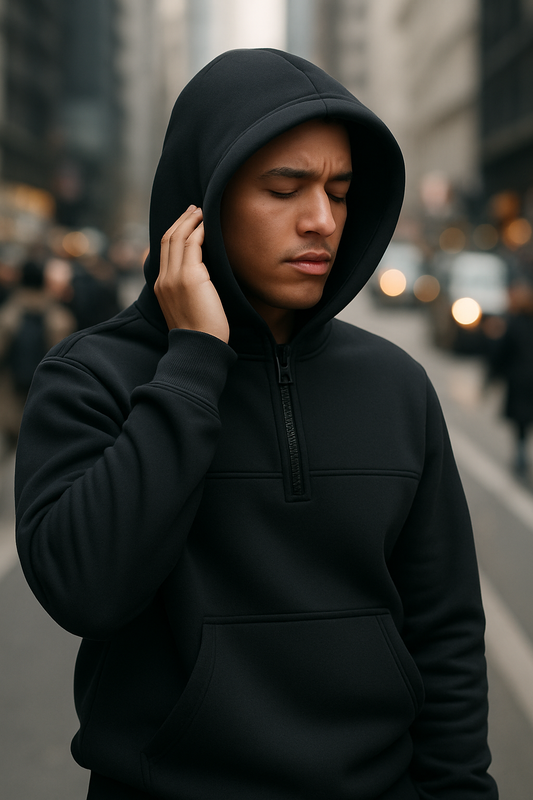Finding the right clothing can be a challenge for anyone, but for individuals with sensory sensitivities, it can be particularly daunting.
Sensory-friendly clothing is designed to provide comfort without irritating the senses, making daily life more manageable for those with autism, ADHD, sensory processing disorder, and other neurodiverse conditions.
In this article, we’ll explore essential tips for choosing sensory-friendly clothing that can help you or your loved ones feel comfortable and confident.
Table of Contents
- Understanding Sensory-Friendly Clothing
- Why Sensory-Friendly Clothing is Important
- Key Features of Sensory-Friendly Clothing
- Tips for Choosing Sensory-Friendly Clothing
- Personal Stories and Testimonials
- FAQs About Sensory-Friendly Clothing
Understanding Sensory-Friendly Clothing
Sensory-friendly clothing refers to garments designed to minimize sensory triggers and provide maximum comfort. These clothes are typically free from harsh seams, tags, and restrictive fabrics. They are ideal for individuals who experience discomfort from certain textures, tightness, or other sensory inputs.
Why Sensory-Friendly Clothing is Important
For neurodiverse individuals, sensory-friendly clothing can make a significant difference in daily life. Uncomfortable clothing can lead to distraction, stress, and even meltdowns, especially in children. By choosing sensory-friendly options, you can help reduce these challenges and improve overall well-being.
Key Features of Sensory-Friendly Clothing
Soft and Breathable Fabrics
The choice of fabric is crucial. Look for materials like cotton, bamboo, or modal, which are soft and breathable. These fabrics help prevent irritation and keep the wearer comfortable throughout the day.
Tag-Free Design
Tags can be a major irritant for those with sensory sensitivities. Opt for tag-free designs or clothes with printed labels to eliminate this issue.
Seamless Construction
Harsh seams can cause discomfort and skin irritation. Sensory-friendly clothing often features flat or minimal seams to enhance comfort.
Stretch and Flexibility
Clothing that offers a good amount of stretch can accommodate a wide range of movements and activities. This is particularly important for children and active adults.
Adjustable Features
Garments with adjustable features such as elastic waistbands, adjustable straps, and Velcro closures can provide a better fit and adapt to individual needs.
Tips for Choosing Sensory-Friendly Clothing
Prioritize Comfort
Comfort should be the primary consideration. Choose fabrics and styles that feel good against the skin and allow for easy movement.
Test Different Fabrics
Not all fabrics will work for everyone. It's important to try out different materials to see which ones are the most comfortable for the individual.
Look for Sensory-Friendly Brands
Many brands specialize in sensory-friendly clothing. Research and explore these brands to find high-quality options designed specifically for sensory sensitivities.
Pay Attention to Fit
Proper fit is essential. Clothing that is too tight or too loose can cause discomfort. Look for adjustable features that allow for a customized fit.
Avoid Excessive Layers
Layering can be uncomfortable for those with sensory issues. Choose single-layer garments that provide warmth and comfort without the need for additional layers.
Consider the Climate
Choose fabrics and styles appropriate for the climate. Breathable, moisture-wicking materials are ideal for warmer weather, while soft, insulating fabrics work well in cooler temperatures.
Involve the Wearer
If possible, involve the person who will be wearing the clothing in the selection process. Their preferences and comfort should guide your choices.
Personal Stories and Testimonials
Many families have found that switching to sensory-friendly clothing has made a world of difference. For example, Lisa, a mother of a child with autism, noticed a significant reduction in her son's morning meltdowns after switching to tag-free, seamless clothing. Similarly, Mark, an adult with ADHD, found that soft, breathable fabrics helped him stay focused and calm during work.
FAQs About Sensory-Friendly Clothing
Is Sensory-Friendly Clothing Only for Children?
No, sensory-friendly clothing is beneficial for both children and adults. Many adults with sensory sensitivities find relief and comfort in these specially designed garments.
Where Can I Find Sensory-Friendly Clothing?
Many online retailers and specialty stores offer sensory-friendly clothing. Look for brands that specifically market their products as sensory-friendly.
Are Sensory-Friendly Clothes Expensive?
While some sensory-friendly clothing can be more expensive due to specialized design and materials, there are affordable options available. It’s important to prioritize quality and comfort over cost.
How Can I Tell If a Garment is Sensory-Friendly?
Look for key features such as soft, breathable fabrics, tag-free designs, flat seams, and adjustable fit options. Reading product descriptions and reviews can also help determine if a garment is suitable.
Can Sensory-Friendly Clothing Help with Anxiety?
Yes, comfortable clothing can help reduce anxiety by eliminating physical discomfort, which can be a trigger for anxiety. The right clothing can provide a sense of calm and well-being.
Conclusion
Choosing the right sensory-friendly clothing can significantly improve the quality of life for individuals with sensory sensitivities. By focusing on comfort, fit, and fabric, you can find garments that make daily activities more manageable and enjoyable. Explore the options available and involve the wearer in the selection process to ensure the best possible outcomes. With the right clothing, you can help create a more comfortable and confident life.
About 247CALM
At 247CALM, we understand the unique challenges faced by individuals with sensory sensitivities, which is why we are dedicated to creating clothing that prioritizes comfort and functionality.
Our products, like the 247CALM hoodie, are meticulously designed with soft, breathable fabrics, tag-free labels, and flat seams to provide the ultimate sensory-friendly experience. With features such as noise-isolating hoods, prolonged sleeves, hidden fidget toys, and secure pockets, our clothing is crafted to meet the needs of neurodiverse individuals.
By choosing 247CALM, you are investing in high-quality, thoughtfully designed apparel that enhances comfort and promotes a sense of well-being in everyday life.




